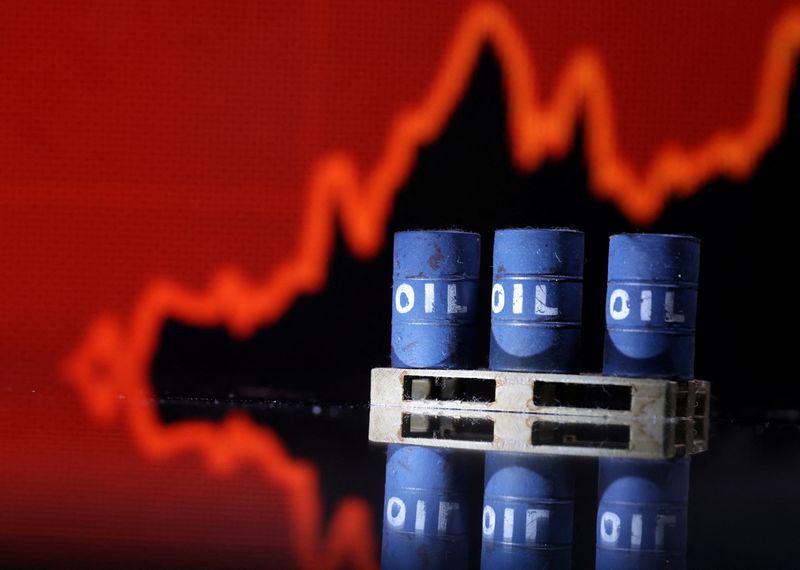By Yuka Obayashi and Trixie Yap
(Reuters) – Oil prices fell for a second day on Thursday after fuel inventories rose sharply in the United States, the world’s biggest oil consumer, although expectations of rising winter fuel demand and worries about tighter supplies limited the decline.
Futures fell 8 cents to $76.08 a barrel at 0409 GMT. U.S. West Texas Intermediate crude oil futures fell 11 cents to $73.21. Both prices fell about 0.1% compared to the previous session.
Both benchmarks fell more than 1% on Wednesday as a stronger dollar and a larger-than-expected increase in U.S. fuel inventories weighed on prices.
Gasoline inventories rose by 6.3 million barrels last week to 237.7 million barrels, the U.S. Energy Information Administration said on Wednesday. Analysts polled by Reuters had expected a rise of 1.5 million barrels. (EIA/S)
Distillate inventories rose 6.1 million barrels for the week to 128.9 million barrels, against expectations for a rise of 600,000 barrels.
But crude oil inventories fell by 959,000 barrels for the week, while analysts had expected a decline of 184,000 barrels.
“Increased fuel inventories in the U.S. led to some selling, but the downside is limited due to the winter demand season in the Northern Hemisphere,” said Hiroyuki Kikukawa, president of NS Trading, an affiliate of Nissan (OTC:) Securities.
JPMorgan analysts expect oil demand to rise 1.4 million barrels per day to 101.4 million bpd in January, largely due to “increased use of heating fuels in the Northern Hemisphere.”
“Global oil demand is expected to remain strong throughout January, fueled by colder-than-average winter conditions driving up heating oil consumption, as well as an earlier start to travel activity in China for the Lunar New Year holiday,” the analysts said.
Despite the falling prices, the market structure in Brent futures suggests that traders are increasingly concerned about a tightening supply as demand increases.

The first-month Brent contract’s premium over the six-month contract hit its highest level since August on Wednesday. An extension of this backwardation, when futures for on-time delivery are higher than for later delivery, typically indicates that supply is decreasing or demand is increasing.
Looking ahead, China’s demand trends, the new U.S. administration’s energy and trade policies and its stance on the Russia-Ukraine war will be in focus, Nissan Securities’ Kikukawa said, adding that traders would likely refrain from taking large positions until President-elect Donald Trump takes office on January 20th.





